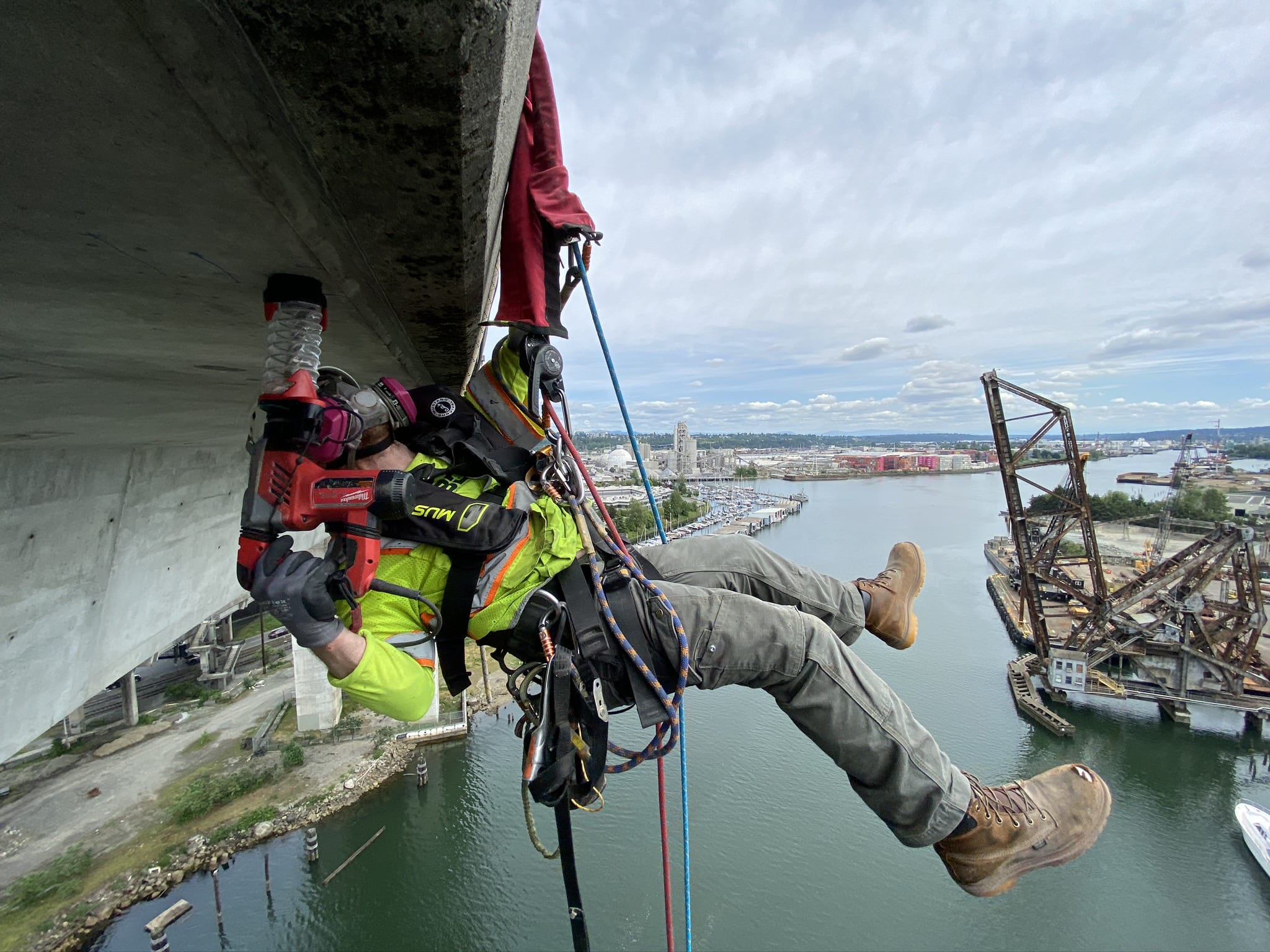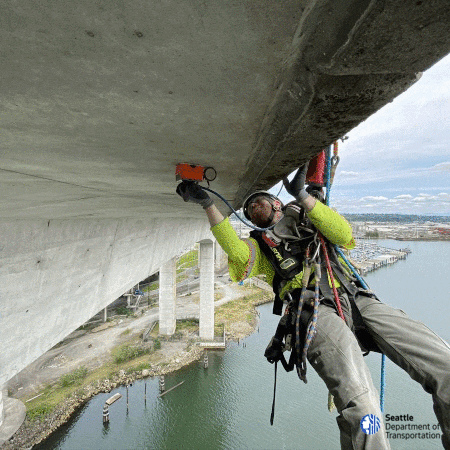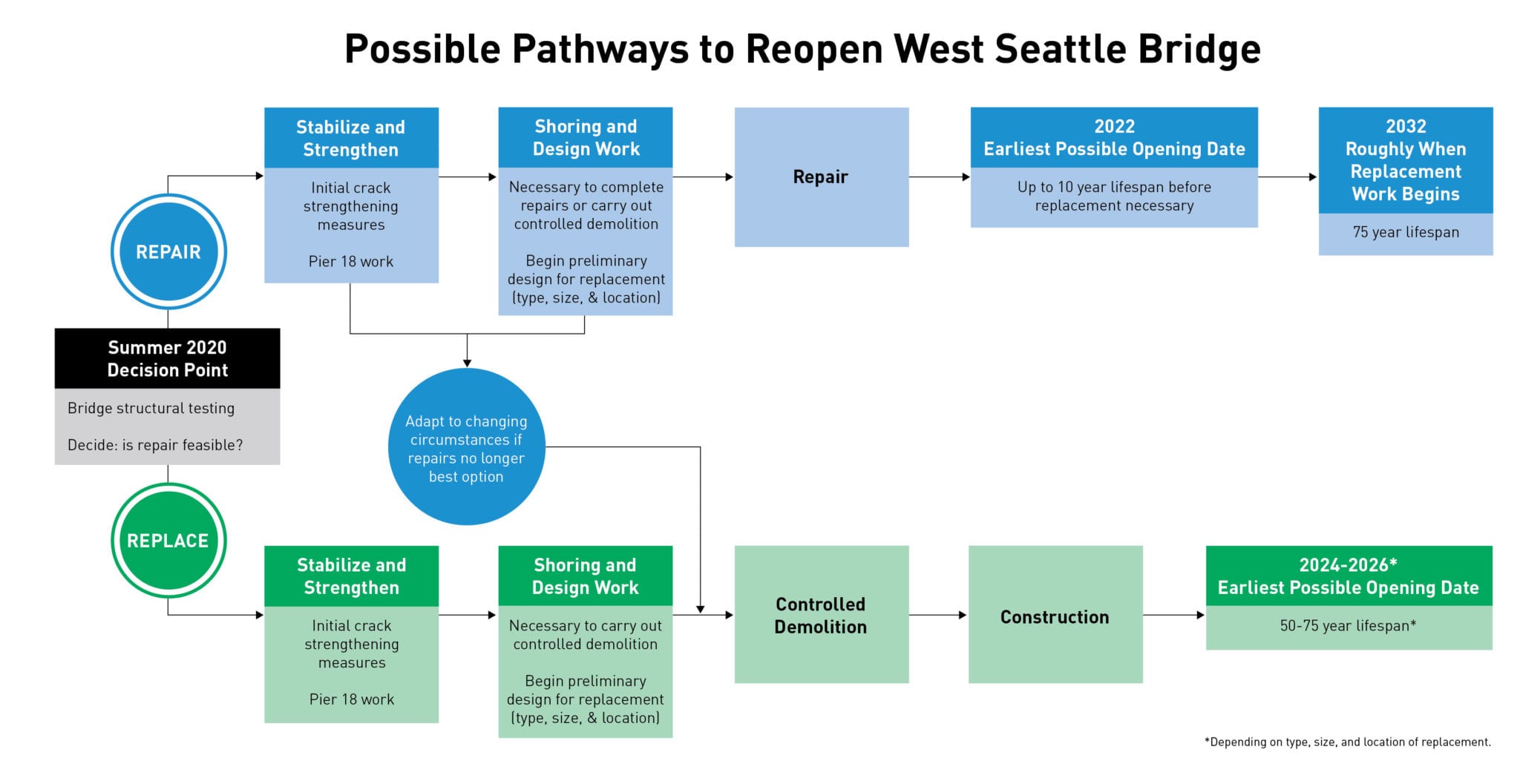
It is a big week for the West Seattle High-Rise Bridge and surrounding communities impacted by its closure.
On Tuesday and Wednesday of this week, our recently-announced Technical Advisory Panel (TAP) and West Seattle Bridge Community Task Force held/will hold their first official meetings, respectively. Those conversations will kick off a rapid series of intensive briefings and meetings for the TAP and Task Force.
To ensure that the public has a similar baseline understanding of the bridge and related work as the TAP and Task Force, we want to share with you an update on current bridge work and what it means, in the broadest of terms, for when and how we might restore travel capacity across the Duwamish. The estimates shared below reflect best estimates at this time and are very much subject to change as we continue to gather additional information. They are helpful, however, for showing where we are right now and what pathways and corresponding crossroads sit before us.
The first step to determining the future of the bridge is to complete testing and analysis to understand the condition of the bridge and how it continues to change.
We learn more about the bridge’s condition every day. This past weekend, crews suspended by ropes and safety harnesses descended from the edge of the bridge to drill precision holes in the concrete and collect core samples. The concrete samples, extracted from several locations along the superstructure, will be tested to determine how resistant the concrete is to corrosion.

Soon, we will have enough information for an informed discussion about whether to repair or replace the West Seattle High-Rise Bridge.
We expect to complete our analysis on the structural stability of the West Seattle High-Rise Bridge in late June or early July. This information is critical to understanding whether repairs to the bridge are possible and provides important information needed to decide what is best going forward.
Our ultimate goal will be to restore the critical transportation connection of the West Seattle High-Rise Bridge as quickly as possible, in the safest, most effective way that puts the needs of the community and urgency of the situation front and center.
Critically, we will not be making this decision alone, and will work closely with elected leaders, partner agencies, our new Technical Advisory Panel of engineering experts, and the new Community Task Force representing affected communities in West Seattle and the surrounding areas.
While we do not have all of the information yet, we are beginning to better understand what tradeoffs and rough timelines could look like for repairing or replacing the bridge.
Just as we shared in April that we do not anticipate the bridge reopening in 2020 or 2021 if repair is possible, today we want to share what the corresponding timeline might be for replacement, should we collectively choose to move in that direction.
While we still do not know exactly how long it would take to repair or rebuild the bridge, and which path is best based on data and structural analysis, we do have a sense of the pros and cons of several options we want to share today, as we prepare to share a much more technical set of considerations in the coming weeks.

If repairs are feasible, they would take until 2022 at the earliest.
Repairs would potentially mean fewer lanes of traffic than the bridge carried before and would only extend the life of the bridge by approximately 10 years, when the bridge would still need to ultimately be replaced.
While these are some significant tradeoffs, this could also offer some big advantages. In addition to allowing vehicles back onto the bridge sooner, reopening the bridge for up to a decade could also give us more time to work with regional partners on the potential design, construction, and funding for a long-term solution to restore capacity across the Duwamish in a more deliberative fashion.
If repairs are deemed not feasible, constructing a new bridge could take, very roughly, four to six years (reopening approximately 2024 – 2026).
But then, the construction would be done, and the new bridge could last for 50-75 years, depending on what type of replacement option was selected.
There are many types of replacement bridges to consider, and the decision will likely depend on several factors including cost, timeline, and the health of the infrastructure around the current bridge. In addition to construction, the approximate four- to six-year timelines include public input, design, planning, and permitting.
Again, we will know more as to whether or not repairs are feasible later this summer, once we complete our analysis on the structural stability of the bridge. Any decisions before then would be imprudent, but has and will not preclude our efforts to prepare for all pivots that data might suggest.
In addition to completing testing and analysis, another immediate step for both repair and replace scenarios will be to stabilize the bridge.
We are continuing to gear up and prepare for the stabilization work that will be the essential next step for public safety, no matter what path is ultimately chosen. While we may be able to adapt and scale back some aspects our stabilization plans if we move towards replacement, we would still need to strengthen and support the bridge in order to safely demolish it prior to replacement work commencing.
This work will begin this summer and will likely consist of three phases:
- Initial Strengthening – This will be necessary to ensure safety during construction. We are planning bridge-strengthening tactics including wrapping the bridge support structure with carbon-fiber reinforcement (like putting a cast on a broken bone), and installing steel tendons to the inside floor of the bridge (like adding braces for extra support).
- Pier 18 Repairs – We are getting ready to stabilize the bridge by repairing locked bearings at Pier 18, which are preventing the bridge from reacting to normal daily stresses as intended.
- Shoring – This step involves building a temporary support structure to hold up the bridge. This would be necessary to safely complete repairs or to hold the bridge up if it is dismantled during a controlled demolition.
While this stabilization work is happening, as we mentioned earlier, we have posted an RFQ to begin the process of identifying the team best able to design a replacement for the High-Rise Bridge—in the engineering world, the first step in the process is called a “Type, Size & Location Study” or TS&L for short. This ensures we will be prepared, and no time lost, if we must quickly shift directions from repair to replace.
We are still working to understand the tradeoffs of other options, such as a tunnel.
We have heard community support for other options, including building a tunnel. We are seriously considering all options at this point, and responded to your feedback by adding an addendum to the replacement design RFQ making clear that consideration of a tunnel is on the table during the TS&L process.
We will continue to look closely at all options, and plan to work with community leaders and technical experts to reach a decision this summer.
We will share more about upcoming decision points in the coming weeks. In the meantime, planning for all trajectories simultaneously allows us to be nimble at every step of the way.
Sign up to receive West Seattle High-Rise Bridge project update emails.
Visit our West Seattle High-Rise Bridge website and stay informed!
- Sign up for periodic emails to stay up to date on the bridge.
- Peek the frequently asked questions.
- Check out the inspection reports.
- Find links to other West Seattle Bridge blog articles.